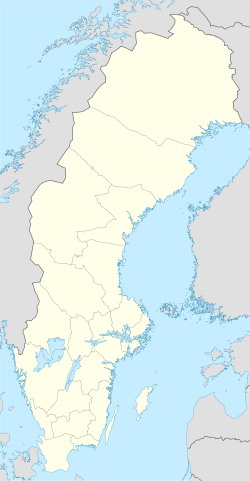Växjö
Växjö (Swedish pronunciation: [vɛkːɧøː]) is a city and the seat of Växjö Municipality, Kronoberg County, Sweden with 55,600 inhabitants in 2005.[1] It is the administrative, cultural and industrial centre of Kronoberg County. Furthermore it is the episcopal see of the Diocese of Växjö. It has a population of about 56,000, out of a municipal total of 80,000 inhabitants. The town is home to Linnaeus University.
Etymology
The city's name is believed to be constructed from the words "väg" (road) and "sjö" (lake), meaning the road over the frozen Växjö Lake that farmers took in the winter to get to the marketplace that later became the city.
History

Växjö Cathedral
Since time immemorial, Växjö (previously called Vecsioren or Væxsior) has been the capital of Värend. Two petroglyphs from the Bronze Age, associated with sun worship, have been found within the current city. Other than these two, only one other petroglyph has been found in Småland. Sacrifice stones, possibly used in the Stone Age, witness the city's religious importance during the earliest eras. This is probably why St. Sigfrid chose this place as his point of origin for his missions in Sweden.
Even though the city has been an Episcopal see since the 10th Century, it did not get its city charter until 1342, issued by Magnus Eriksson. During the Middle Ages Växjö had many pious institutions such as a Franciscan monastery, a hospital of the Holy Ghost and a Bridgettine Order. In the 12th century Växjö got its first school, Växjö katedralskola, that was much visited. By 1643 it received gymnasium status.
At the beginning of Gustav Eriksson's war of liberation, the peasantry joined forces under the guidance of the union-hostile bishop Ingemar Pedersson, the mountain men and the peasantry of Dalarna, Hälsingland and Gästrikland, who urged fidelity to the their leader Gustav Eriksson.
During the Dacke War, a peasant uprising, the city was in the hands of Nils Dacke and his supporters from the summer of 1542 until after New Year 1543. The city residents and the clergy seem to have adopted a cautious neutrality, even though common sympathies rested with Dacke.
Several times during the Northern Wars, Scanian Wars and thereafter, the city has been plagued by fire (in 1277, 1516, 1570, 1612, 1658, 1690, 1749, 1753, 1799, 1838 and 1843). After the last fire in 1843, when 1140 citizens were rendered homeless, Växjö got its current street plan.[3]
Demography
| Year |
Population |
| 1960 |
22 784 |
| 1965 |
29 354 |
| 1970 |
39 019 |
| 1975 |
40 328 |
| 1980 |
42 632 |
| 1985 |
- |
| 1990 |
46 735 |
| 1995 |
49 865 |
| 2000 |
51 790 |
| 2005 |
55 600 |
| 2010 |
64 200 |
|
[4]
Notable locations
Växjö University has 15,000 students (2008).
Industries include Alstom and Aerotech Telub. Växjö houses Sweden's National Glass Museum [5] and claims to be the capital of the "Kingdom of Crystal" [6] as well as of the "Kingdom of Furniture"[7].
The Swedish Emigrant Institute [8] was established in 1965 and resides in the House of Emigrants near the Växjö lake in the heart of the city. It contains archives, library, museum, and a research center relating to the emigration period between 1846 and 1930, when 1.3 million (or 20%) of the Swedish population emigrated, mainly to the USA. Archives, dating to the 17th century, of birth and death records as well as household records are available on microfiche.
Immediately north of Växjö is Kronoberg Castle, a ruined fortress constructed in the 15th century. This castle was used as base by rebel Nils Dacke during the Dacke War. The fortress has thick walls and an interesting array of artillery portals that face out onto the lake Helgasjön to the north. The city also holds another castle, Teleborg Castle built in 1900 and situated near the University.
Climate
| Climate data for Växjö |
| Month |
Jan |
Feb |
Mar |
Apr |
May |
Jun |
Jul |
Aug |
Sep |
Oct |
Nov |
Dec |
Year |
| Source: World Weather Information Service[9] |
Notable natives
- Joachim Björklund, footballer
- Jonas Björkman, tennis player with 50 doubles titles including Grand Slams
- Karl-Birger Blomdahl, 20th century music composer
- Bjorn Englen, bass player of Yngwie Malmsteen's Rising Force
- Knute Heldner, 20th century Swedish American artist
- Owe Jonsson, track and field athlete and European champion
- Martin Kellerman, comic strip creator
- Carolina Klüft, track and field athlete and Olympic gold medalist at Athens 2004
- Pär Lagerkvist, author and winner of the Nobel Prize in Literature, 1951
- Otto Lindblad, 19th century music composer
- Carolus Linnaeus, botanist, physician and zoologist
- Christina Nilsson, 19th century soprano celebrity
- Thomas Ravelli, football goalkeeper
- Peder Sjögren, 20th century author and playwright
- Jonas Swensson, President of the Augustana Evangelical Lutheran Church
- Håkan Syrén, a military General and Supreme Commander of the Swedish Armed Forces
- Mats Wilander, tennis player with seven Grand Slam victories 1982–1988
- Björn Wirdheim, racing driver
- The Ark, rock band
Sports teams
- Växjö Lakers, ice hockey
- Östers IF, football
References
External links
 |
Växjö is one of 133 places with the historical city status in Sweden. |
|
Localities in Växjö Municipality, Kronoberg County, Sweden |
|
| Localities: |
Åby · Åryd · Björnö · Braås · Furuby · Gemla · Ingelstad · Lammhult · Nöbbele · Norrhult-Klavreström (part of) · Rottne · Tävelsås · Växjö (seat)
|
|
|
Municipalities and seats of Kronoberg County |
|
| Municipalities |
Älmhult · Alvesta · Lessebo · Ljungby · Markaryd · Tingsryd · Uppvidinge · Växjö
|
 |
|
| Municipal seats |
Älmhult · Alvesta · Åseda · Lessebo · Ljungby · Markaryd · Tingsryd · Växjö
|
|
| Counties of Sweden · Sweden |
|
|
30 most populous cities of Sweden |
|
| as of 2005, according to Statistics Sweden [4] |
|
|
|
|
|
| 19. |
Halmstad |
55,700 |
| 20. |
Växjö |
55,600 |
| 21. |
Sundsvall |
49,300 |
| 22. |
Luleå |
45,500 |
| 23. |
Trollhättan |
44,500 |
| 24. |
Östersund |
43,800 |
|
| 25. |
Borlänge |
39,400 |
| 26. |
Falun |
36,400 |
| 27. |
Upplands Väsby |
36,000 |
| 28. |
Tumba |
35,300 |
| 29. |
Kalmar |
35,200 |
| 30. |
Skövde |
33,100 |
|
|
|
|
50 most populous urban areas in the Nordic countries |
|
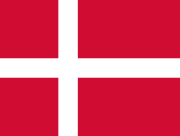 Denmark · Denmark · 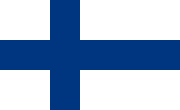 Finland · Finland · 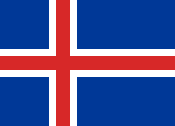 Iceland · Iceland · 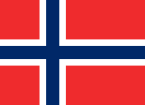 Norway · Norway · 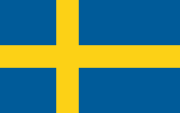 Sweden Sweden |
|
| 1. |
 Stockholm Stockholm |
1,252,000 |
| 2. |
 Copenhagen Copenhagen |
1,181,239 |
| 3. |
 Helsinki Helsinki |
1,027,635 |
| 4. |
 Oslo Oslo |
907,288 |
| 5. |
 Gothenburg Gothenburg |
510,500 |
| 6. |
 Malmö Malmö |
258,000 |
| 7. |
 Aarhus Aarhus |
242,914 |
| 8. |
 Bergen Bergen |
227,752 |
| 9. |
 Tampere Tampere |
211,691 |
| 10. |
 Reykjavík Reykjavík |
195,000 |
|
| 11. |
 Stavanger Stavanger |
189,828 |
| 12. |
 Turku Turku |
176,401 |
| 13. |
 Odense Odense |
166,305 |
| 14. |
 Trondheim Trondheim |
160,072 |
| 15. |
 Uppsala Uppsala |
144,839 |
| 16. |
 Oulu Oulu |
137,370 |
| 17. |
 Jyväskylä Jyväskylä |
128,114 |
| 18. |
 Aalborg Aalborg |
123,432 |
| 19. |
 Västerås Västerås |
107,000 |
| 20. |
 Fredrikstad Fredrikstad |
101,698 |
|
| 21. |
 Lahti Lahti |
100,444 |
| 22. |
 Örebro Örebro |
98,200 |
| 23. |
 Linköping Linköping |
97,400 |
| 24. |
 Drammen Drammen |
96,563 |
| 25. |
 Kuopio Kuopio |
91,845 |
| 26. |
 Helsingborg Helsingborg |
91,500 |
| 27. |
 Kouvola Kouvola |
88,396 |
| 28. |
 Skien Skien |
86,923 |
| 29. |
 Jönköping Jönköping |
84,400 |
| 30. |
 Norrköping Norrköping |
83,600 |
|
| 31. |
 Pori Pori |
75,562 |
| 32. |
 Lund Lund |
76,200 |
| 33. |
 Umeå Umeå |
75,600 |
| 34. |
 Joensuu Joensuu |
72,167 |
| 35. |
 Esbjerg Esbjerg |
71,459 |
| 36. |
 Lappeenranta Lappeenranta |
70,210 |
| 37. |
 Gävle Gävle |
68,700 |
| 38. |
 Kristiansand Kristiansand |
67,547 |
| 39. |
 Hämeenlinna Hämeenlinna |
66,257 |
| 40. |
 Borås Borås |
63,400 |
|
| 41. |
 Södertälje Södertälje |
60,300 |
| 42. |
 Randers Randers |
60,227 |
| 43. |
 Eskilstuna Eskilstuna |
60,200 |
| 44. |
 Rovaniemi Rovaniemi |
59,274 |
| 45. |
 Vaasa Vaasa |
58,607 |
| 46. |
 Täby Täby |
58,593 |
| 47. |
 Karlstad Karlstad |
58,500 |
| 48. |
 Kolding Kolding |
57,087 |
| 49. |
 Seinäjoki Seinäjoki |
56,578 |
| 50. |
 Halmstad Halmstad |
55,688 |
|
|
|
